
Malnutrition takes many forms – from chronic hunger, undernutrition (wasting, stunting, underweight), and deficiencies in vitamins and minerals, to micronutrient excess, overweight, obesity and diet-related noncommunicable diseases (heart disease, stroke, diabetes and some cancers). Nowadays, it is easy to find the different forms of malnutrition across households. For example, some households have malnourished children and overweight mothers or fathers, while others have overweight children with chronic malnutrition or vitamin/mineral deficiencies.
To tackle malnutrition in all its forms, we need to take actions to transform our food systems and make them sustainable, fair and inclusive through regulations that allow the population access to nutritious, safe, varied products at a fair price and produced in an environmentally responsible manner. This starts by protecting and promoting breastfeeding and adequate complementary feeding, developing food-based dietary guidelines, as well as regulating the school environment and food environment (front of package labelling, taxes, advertising). This is only possible with collaboration and participation from government and nongovernmental organizations, including the private sector.
Components of a food system
A food system is made up of all components (environment, population, resources, processes, institutions, and infrastructure) and activities involved in the production, processing, distribution, preparation, and consumption of food. It also includes the impact of these activities on nutrition and health, socioeconomic growth, equity and environmental sustainability.
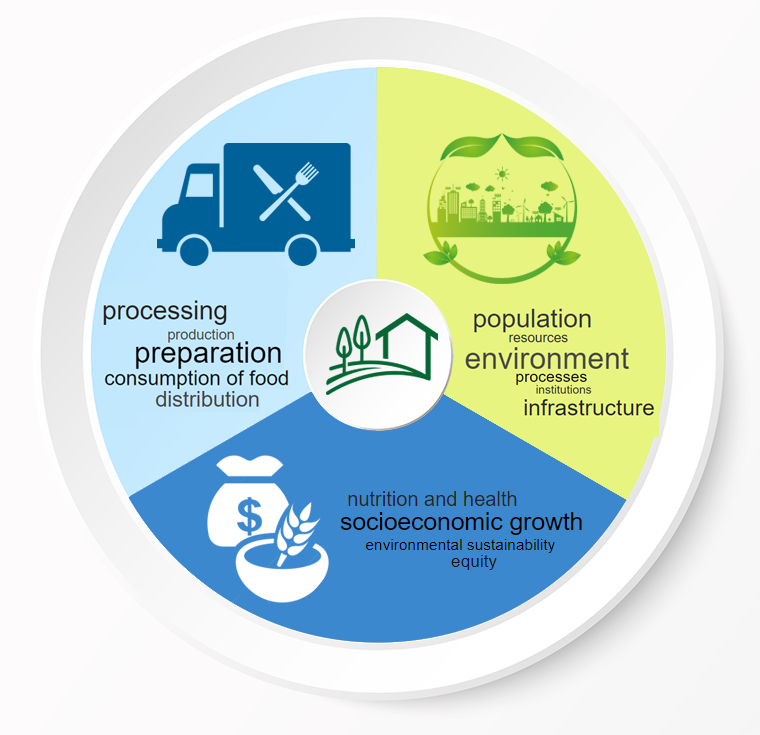
Sustainable food systems
A sustainable food system is one that guarantees food security and nutrition for all in such a way that economic, social and environmental conditions are not compromised for future generations.
Actions for transforming food systems
Transforming food systems and making them more sustainable, fair and inclusive will only be possible with collaboration and participation from government and nongovernmental organizations, including the private sector. WHO is working closely with United Nations agencies, government and nongovernmental organizations, academic institutions and other civil societies to provide countries with the technical support and tools needed to achieve healthier, more sustainable and equitable food systems through regulations that allow the population access to nutritious, safe, varied products at a fair price and produced in an environmentally responsible manner. These are the recommended action areas as reflected in the 5 Action Tracks for the Food Systems Summit in support of the Sustainable Development Goals and “building back fairer” from COVID-19.
Ensuring access to safe and nutritious food for all
(enabling all people to be well nourished and healthy)
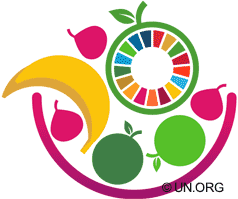
Shifting to sustainable consumption patterns
(promoting and creating demand for healthy and sustainable diets, reducing waste)
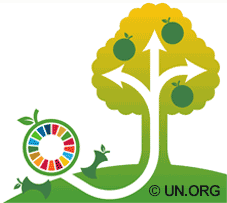
Boosting nature-positive production at sufficient scale
(acting on climate change, reducing emissions and increasing carbon capture, regenerating and protecting critical ecosystems and reducing food loss and energy usage, without undermining health or nutritious diets)

Advancing equitable livelihoods and value distribution
(raising incomes, distributing risk, expanding inclusion, creating jobs)
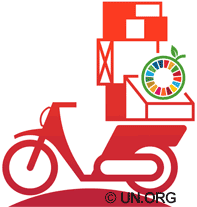
Building resilience to vulnerabilities, shocks and stresses
(ensuring the continued functionality of healthy and sustainable food systems)
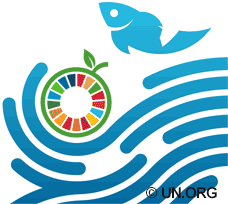
The 5 Action Tracks capture various key opportunities and challenges of food systems and relate to one or more food systems components. Pursuing each Action Track in isolation from the others would lead to inefficient solutions which neglect system-wide effects.
Related links
FAO: sustainable food systems: concept and framework
Food systems dashboard: food systems data for improving diets and nutrition
Food systems: definition, concept and application for the UN Food Systems Summit
Impact of COVID-19 on people's livelihoods, their health and our food systems
Informal Member State briefing on the UN Food Systems Summit
Nutrition for Growth Summit 2021: food, health and prosperity for all
Sustainable Development Goal 2: zero hunger
Sustainable Development Goal 3: ensure healthy lives and promote well-being for all at all ages
Sustainable food systems, biodiversity and health
The nutrition challenge: food system solutions
UN Decade of Action on Nutrition


